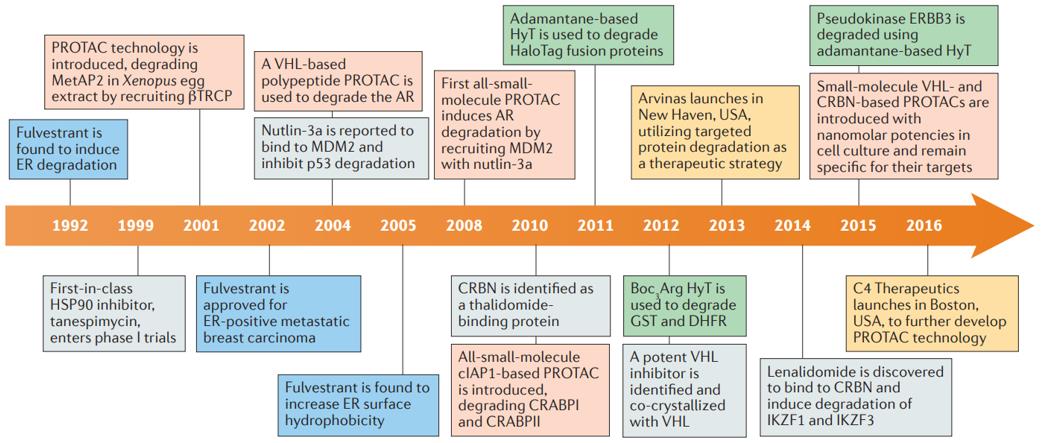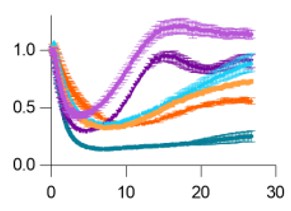Protein degrader, also known as SNIPER or degronomid, consist of a small molecule target binder or inhibitor on one side chemically linked to an E3 ligase recruiter compound on the other. protein degraders induce degradation by simultaneously binding target protein and E3 ligase complex proteins, bringing target protein close to ubiquitination and targeted degradation by the ubiquitin proteasomal system (UPS). There are hundreds of E3 ligases and hundreds of proteins involved in active E3 ligase complexes in eukaryotes, but few known binding compounds which could be used as recruiter molecules for protein degrader design.
Functional characterization of protein degraders remains multiple challenges, including assessment of cellular permeability, ternary complex formation (target-protein degrader-E3 ligase component), functional ubiquitination, and degradation. Some of the subsequent methods either cannot be completed in live cells, or cannot achieve high-throughput screening, or cannot perform quantitative analysis. So Profacgen has developed a highly feasible and physiologically relevant platform that can provide customers with unique insights into protein degradation processes and highly complex mechanisms.
 Figure 1. Timeline of the induced protein degradation field (Lai, A.C.; Crews, C.M. 2017)
Figure 1. Timeline of the induced protein degradation field (Lai, A.C.; Crews, C.M. 2017)

Profacgen has built a modular live-cell platform to monitor protein degraders. The platform fully combines DNA-Edit endogenous tagging and luminescent technology to measure target protein levels with high-precision kinetics. The platform is also coupled with optimized bioluminescence resonance energy transfer (NanoBRET), enabling kinetic measurements of intracellular protein interactions such as ternary complex formation, ubiquitination, and protein degrader-target binding.
The advanced technology of NanoBRET is well-suited for these studies because the loss of the donor (target protein) does not affect the readout of ternary complex formation and enables the detection of transient interactions. On our platform, clients can apply these advanced technologies to enhance understanding of any protein degrader or process that impacts protein homeostasis.
Profacgen has accumulated lots of experience in PROATCs. Our professional technical team can provide customers with high-quality real-time degradation kinetics measurement and many related featured services. Our competitive prices and extensive expertise have earned us the trust of our collaborators. Contact us to find out how Profacgen could be of assistance.
References
Fill out this form and one of our experts will respond to you within one business day.